Traveling by high-speed train has become a popular choice in China because it could offer travelers a fast and safe journey at a lower price. If you have trouble in making travel plans or choosing destinations, this China Train tour with Zhangjiajie is perfect for you. It contains a train tour from Zhangjiajie to Guilin and a Guilin to Shanghai Train Tour. Joining this China train tour, you’ll feel what’s like to visit Lama Temple in Beijing in the morning, but eat a Chinese hamburger and wander on the street in Xi’an by dawn. You may also be immersed in the history of the Old City Wall in Xi’an in the morning but later in the evening find yourself with a mouth full of spicy food in Zhangjiajie. Can you imagine that? Come and join us. The China train tour will make it happen.

Welcome to Beijing! After your arrival, your tour guide will pick you up at the airport or train station. You will be transferred to the hotel. Have a good rest.
Our trip starts at the center of Beijing, Tian’anmen Square. It covers an area of 440,000 square meters, as big as 61 soccer fields. The Monument to the People’s Heroes, the Great Hall of the People, and the National Museum of China are all located here. On October 1st, 1949, one of the biggest events took place here, which was the founding ceremony of the Central People’s Government of the People’s Republic of China. Thirty thousand people gathered here and witnessed the birth of new China. Since then, Tian’anmen Square has been playing an important role in grand events and celebrations. Today, Tian’anmen Square can accommodate 1 million people.
Going north, our next stop will be the Forbidden City (Closed on Monday). It is also known as the Palace Museum. It was the imperial palace for emperors during the Ming (1368-1644) and Qing (1636-1912) dynasties. The Forbidden City covers an area of 720,000 square meters, which is equivalent to the area of 100 soccer fields. The Forbidden City was home to 24 emperors and the last emperor was Emperor Puyi who was appointed by Empress Dowager Cixi. He became the emperor at the age of 3 and stepped down at 5. He lived an uncommon life in the Forbidden City.
The emperors lived and administered state affairs in the Palace of Heavenly Purity. After walking into the palace, you’ll see a large plaque hanging high right in the middle. The four Chinese characters on it, written by Emperor Shunzhi, mean open and aboveboard. It suggests that to solidify the throne, an emperor has to learn lessons and do good for the people. There is a story behind the plaque. The princes used to fighting or killing each other to claim the crown. To ease the confrontation, Emperor Yongzheng came up with the idea that the name of the next in line to the throne will be written down and hidden behind the plaque. When the emperor is deceased, the name should be unveiled together by assisting ministers. This way of appointing the next emperor was adopted ever since.
After lunch, you will visit the Temple of Heaven. The emperors of the Ming and Qing dynasties prayed for good agricultural harvests in the Temple of Heaven and hoped their people would live peacefully. The techniques applied during its construction are unique and interesting. The Echo Wall, which is the perimeter wall of the Imperial Vault of Heaven, helps the transmission of sounds. When two people standing against the wall, facing each other and talking, one can always hear the other one clearly, even if there is a 200-meter distance. Nowadays, the Temple of Heaven is a place where Beijing residents come to relax and exercise.
Your last stop today will be the Summer Palace. It was built for the emperors to spend their summertime. One of the most famous features is the Long Corridor in the Summer Palace. With a total length of 728 meters, it is the longest corridor in the world. More than 14000 paintings, featured with people, sceneries, flowers, traditional stories, and other elements, are painted on the pillars, beams, and other parts of the corridor. Astoundingly, you will find them all different from one another. Going north of the Summer Palace, you will see many little stone lions on the Seventeen-Arch Bridge. If you observe carefully, you will find that these 544 little stone lions also have different posts. I am sure you will be amazed by the superb skills of ancient Chinese craftsmen.
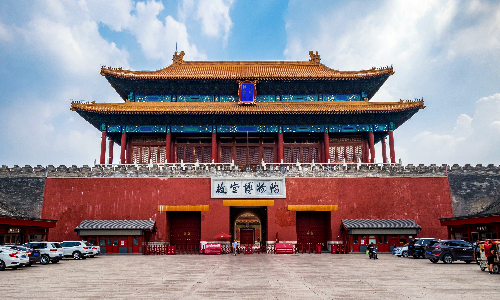
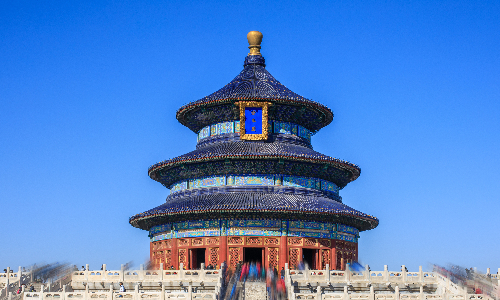
This morning, we will drive you northwest to the Ming Tombs, which is about 50 kilometers away from the center of Beijing, and it will take approximately one and a half hours. The Ming Tombs is also known as the Thirteen Ming Tombs, because 13 emperors of the Ming Dynasty were buried here. As an imperial tomb cluster, it is the best-preserved of its kind and has the largest number of emperors buried in the world.
The Chang Tomb was firstly constructed, which is also the largest and best-preserved one among the others. Emperor Zhu Di was buried here with Empress Xu. Emperor Zhu Di methodically planned the construction of the Chang Tomb, and the naming of the tomb also has deep meanings. First of all, the Chinese character, Chang, means a long extension. It indicates that Emperor Zhu Di wanted the Ming Dynasty to be long-lasted under the rule of himself and his royal descendants. Secondly, the Chinese character, Chang, can also be pronounced as Zhang, which means the elders. In Chinese cultures, the elders should be well-respected. As the third emperor of the Ming Dynasty, Emperor Zhu Di moved the capital city from Nanjing to Beijing. He was also the first emperor who authorized the construction of the Forbidden City. And most importantly, Emperor Zhu Di was the first emperor to be buried in the Ming Tombs. Thus, other than being an emperor, he should also be well-respected based on the previous facts.
After lunch, we will drive for an hour to the Great Wall, which is 40 kilometers northeast of the Ming Tombs. The Great Wall was built to prevent the nomads in the northwest by Emperor Qin Shihuang, the first emperor of the Qin Dynasty (221BC-207 BC). From Shanhai Pass in the east to Jiayu Pass in the west, the Great Wall is more than 6,700 kilometers long. It is renowned as a military project, with a complete defensive system composed of watchtowers, beacon towers, shooting mouths, and other structures along the wall. Soldiers on the watchtowers could discover and observe the incoming enemies from afar. The beacon towers were used to pass signals with thick black smoke in the day and fire in the night. When a battle started, the soldiers could shoot and observe the enemies from the shooting mouths and then dodge behind the wall. Today we will be visiting the Mutianyu Great Wall. Built upon mountains and hills, it is the longest section of the Great Wall with a total length of 5,400 meters. Given the precipitous landform of the region, it won’t be easy to climb up the Mutianyu Great Wall. Therefore, taking the cable car or chairlift up to the Great Wall will be a good choice. For elder guests, we recommend taking the round-trip cable car. For guests seeking an exciting experience and a closer look at the scenery, we highly recommend you to take the chairlift up and toboggan down. The facilities are reliable and you will be in good hands. You may have already heard that Sir John Major, former Prime Minister of the UK, and William Jefferson Clinton, former president of the USA, both took the cable car when they visited the Mutianyu Great Wall.
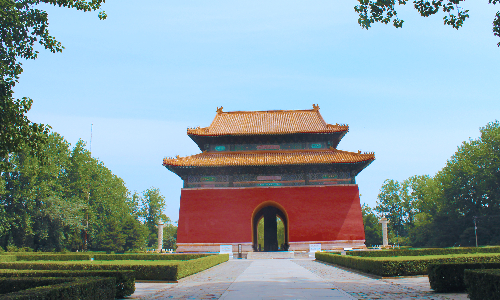
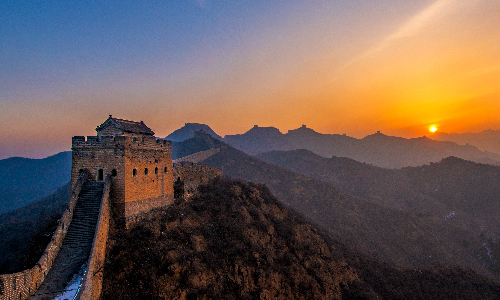
 Xi’an
Xi’an This morning, you will take a rickshaw and visit Hutongs. Hutong is the alley of Beijing’s old town area in which the cultures, buildings, and living styles of old Beijing are well preserved. The rickshaw was a traditional means of transport in the Republic of China (1912-1949). A rickshaw ride will certainly bring you back to the old time. You will see the mottled walls, pass by traditional quadrangle courtyards, and watch the local people playing chess by the roadside. The quadrangle courtyard here is called Siheyuan, which is also known as the traditional dwellings in Beijing. Along the journey, you may notice that some gates of the quadrangle courtyards have different appearance. A long time ago when quadrangle courtyards were home to high officials, the gate could tell their social status. If the gate is tall and large with delicate patterns carved on the cornice, it suggests that the host might be a grand minister. If there is a lion painted on the side door, the courtyard might belong to a senior military official. After the rickshaw tour, you will have a chance to pay a family visit to a quadrangle courtyard. Listening to the stories happened here will give you a closer look at the old Beijing.
Later this morning, we will drive you northeast to visit the Lama Temple. Originally, it was built by Emperor Kangxi and was given to his fourth son as a royal residence. After the fourth son came into power and became Emperor Yongzheng, the old residence was changed into an imperial palace in a short period of time. It is interesting that the next emperor, Emperor Qianlong, was also born here. Thus, it is believed that the palace is a blessed place. Later, Emperor Qianlong changed the Lama Temple into the largest lamasery and made it the center of managing Buddhism affairs in the mid and late Qing dynasty. These days, it is still a popular place for residents to pray for good luck. Tens of thousands of people would wait in lines and offer incense here on the first day of the Chinese Lunar New Year.
After lunch, we will take you to the train station. You will catch the estimated train G87 14:00/18:19 to Xi’an. China high-speed train is one of the safest, most common, and most comfortable means of transportation. Your tour guide will help you get on the train. You can take a rest or enjoy the nice views along the journey. A local guide will be waiting for you at Xi’an train station and accompany you to the hotel. Your visit will start tomorrow. Xi’an was the capital city of 13 dynasties. The large quantities of traditional architectures here are well preserved. Besides, there are even more historical stories to tell. You will never be bored in this city.
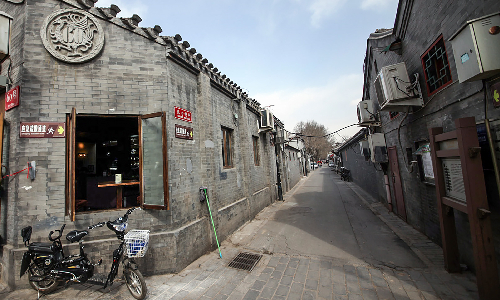
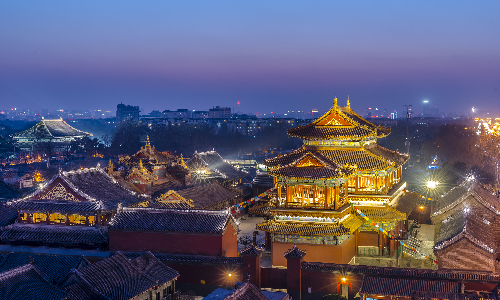
Your journey starts right after breakfast. We will drive you northeast to the Terra Cotta Warriors and Horses Museum, which is 40 kilometers away from downtown and it will take approximately one hour. The terracotta warriors and horses were built to guard the tomb of Emperor Qin Shihuang, the first emperor of the Qin dynasty. With warriors, weapons, and horses made in terracotta, Emperor Qin Shihuang believed that he could extend his rule even after his death. Walking into the exhibition hall, you will find out that even though the terracotta warriors all look alike, but none of them is identical. You can focus your eyes on their faces and you may find that their eyes, noses, even ears are all distinctive. The differences between their hair and clothes are more obvious. That’s because the terracotta warriors were made based on real people who come from different places. These details together with other facts made the Terra Cotta Warriors and Horses Museum the 8th Wonder in the world.
After lunch, we will drive southwest to the Big Wild Goose Pagoda. It is 1.5 hours away from the Terra Cotta Warriors and Horses Museum. The pagoda was built in the Tang dynasty (618-907) to preserve the scriptures brought from ancient India by a Buddhist monk, Tang Xuanzang. There are various stories behind the naming, one of which is related to Monk Xuanzang’s journey. It is said that on his way to ancient India, Monk Xuanzang got lost. By the time he ran out of food and water, two wild gooses appeared and stopped in front of him. Monk Xuanzang asked about the direction and the gooses led him back to the right way. As soon as he returned to Xi’an, he built two pagodas to show his respect and gratitude to the gooses and one of them is the Big Wild Goose Pagoda.
Your next stop will be the Muslim Quarter, a block where 60 thousand local Muslims dwell on and run small businesses today. It contains several streets and the most attractive and famous one should be the snack street, a paradise for foodies. We would recommend you to try the Chinese Hamburger, Pita Bread Soaked in Lamb Soup and plum syrup. The local way to eat the Pita Bread Soaked in Lamb Soup is to break the bread into small pieces with your hands and then put it in the delicious lamb soup. Don’t rush. Take your time. It is well worth the time and effort once you have a taste of the fully soaked pita bread. In addition to various snack and food stores, the well-known Great Mosque is also located in the Muslim Quarter. The architecture in the Muslim Quarter is in a combination of traditional Chinese style and Muslim style. So is the Great Mosque but with a slight difference. Its outer look is in traditional Chinese style but the inner decoration and arrangement are strictly done by Muslim institutions. The inscriptions on the stone steles in the temple are also written in Arabic, Chinese and Persian. Walking in the mosque, you’ll be amazed by the fusion of two styles and cultures.
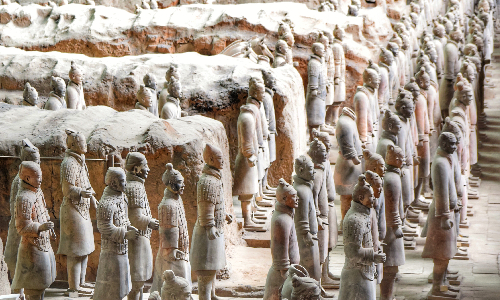
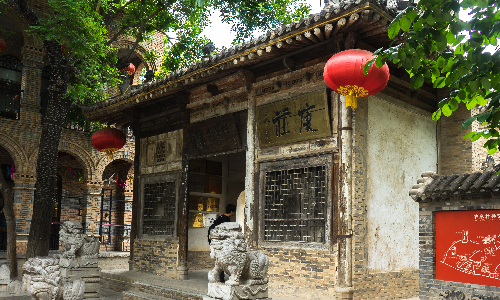
 Zhangjiajie
Zhangjiajie After breakfast, you will take a walk on the Old City Wall, which is located in the center of Xi’an. The old Xi’an city was built inside of the Old City Wall and protected by it. The new city was built outside of the wall. Therefore, the Old City Wall draws a line between the ancient city area and the new city area in Xi’an. Standing on the Old City Wall, you will clearly feel the contrast between historical buildings and modern skyscrapers, and you will also appreciate the development of Xi'an over 2000 years.
Later, we will drive you to the airport. You will take the estimated flight 3U3271 14:35/16:05 to Zhangjiajie. The local tour guide will pick you up and move you to the hotel. Your visit will start tomorrow.
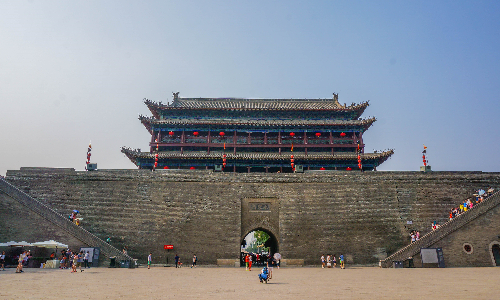
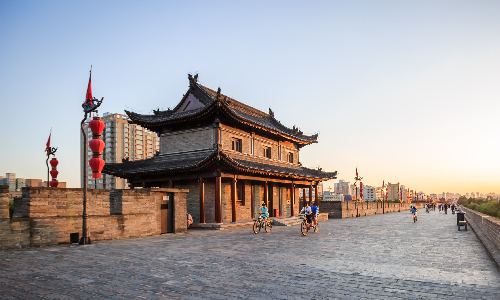
This morning, you will be driven north to the Zhangjiajie National Forest Park. It is 30 kilometers away from downtown and it will take approximately 40 minutes. The Zhangjiajie National Forest Park covers an area of 4810 hectares. Some famous attractions, such as the Golden Whip Stream, Tianzi Mountain, and Yuanjiajie, are all located inside the park. The coziest thing to do in a fresh morning is to take a walk along the Golden Whip Stream. The Golden Whip Rock is beside the Golden Whip Stream. According to legend, Emperor Qin Shihuang had a magic golden whip that could be used to move mountains. One day Qin Shihuang was using this golden whip to move the mountain, but the whip fell accidentally. After the whip fell on the ground, it became this golden whip rock. In the morning, the Golden Whip Rock looks dark brown, but at noon, it will become golden shining under direct sunlight which is very fascinating.
After lunch, you will visit the Tianzi Mountain. All the views here are created by nature, without any artificial modification. If you choose to take a cable car going up the mountain, you will have a feeling that you are wandering into a fairyland. While enjoying the breathtaking views out the window, you will be attracted by a series of peaks. One looks like a standing writing brush and another one next to it looks like a brush rack. That is the astounding Yubi Peak (Writing Brush Peak). Legend says that during the Song dynasty (960-1279), a local warrior named Xiang was selected as a leader by his people and fought against the tyranny on the Tianzi Mountain. However, they were defeated and dead here. And then the writing brush that has been used by the warrior Xiang became a peak. That is the Yubi Peak you have seen today.
Next, you will visit the Yuanjiajie. It is a cluster of scenic spots, such as the Natural Stone Bridge that links two separate hills, and the Hallelujah Mountain where some scenes in the movie Avatar were shot. And the Bailong Elevator you will take is another highlight in Yuanjiajie. Being built against the mountain, it is the highest outdoor elevator in the world, with a total height of 335 meters. It only takes 66 seconds to reach the bottom from up the mountain. Previously, it will take about 5 hours to drive.
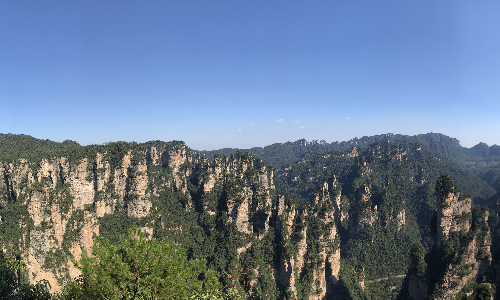
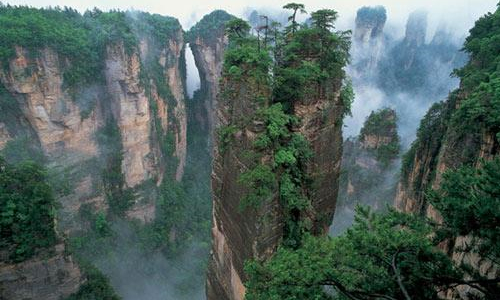
After breakfast, we will drive you northeast to the Zhangjiajie Grand Canyon, which is 45 kilometers away from the Zhangjiajie National Forest Park and it will take approximately 1 hour. How beautiful could the canyon be? Legend says that once the youngest daughter of the Dragon King sneaked out from the undersea palace for fun. She accidentally found this place and was deeply attracted by the scenery. She stayed and lived here ever since. Today you may not be able to find out whether the daughter of the Dragon King was ever lived here or not, but you will definitely find the beauty of the canyon.
The canyon will never bore you. Taking a walk on the Zhangjiajie Grand Canyon Glass Bridge, which is also known as the Yuntiandu Glass Bridge, will add a lot of excitement to the journey. How exciting could it be? It is 536 meters long and 280 meters above the ground. The deck of the bridge is mainly made of glass. Walking on it would be like walking in the air. You may worry that if the glass bridge will be broken when you walk on it. Don’t worry. It was tested in dozens of ways to ensure the tourists’ safety. And it can withstand 800 people walking on the bridge at the same time.
After lunch, we will drive you southeast for 40 minutes to the Baofeng Lake, which is 28 kilometers away from the Zhangjiajie Grand Canyon. Baofeng Lake is known as “abode of immortals”. It is 2.5 kilometers long, with a water surface of more than 150 meters at its widest point, and an average water depth of 72 meters. The calm lake is like a beautiful jade inlayed on the mountain. In addition to lakes, you can also see waterfalls, distinctively shaped peaks and temples here.
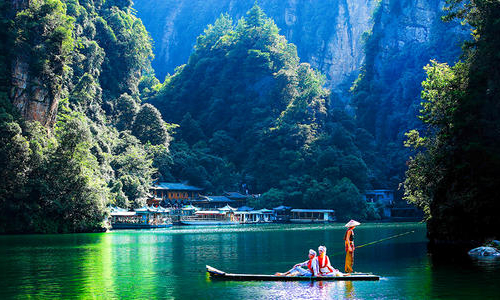
 Guilin
Guilin We will drive you to the Changsha Train Station. After lunch, you will catch the estimated train G435 15:05/18:19 to Guilin. Your tour guide will help you to get on the train safely. Like the high-speed train you took from Xi’an to Zhangjiajie, it is safe and comfortable. What’s more, it moves at a high speed but still can remain stable. You can give it a shot by standing a coin on the high-speed train and the coin can keep balance for several minutes. A local tour guide will pick you up at the train station once you arrive. You will be transferred to the hotel. It is said that the views in Guilin could overshadow the rest of the views in the world. Take a good rest. You will have the chance to verify the saying tomorrow.
After breakfast, you will firstly visit the Reed Flute Cave. It is 5 kilometers away and we will drive you southeast for 15 minutes. The Reed Flute Cave is a 240-meter-deep karst cave. Walking into the cave, you’ll see various stalagmites and stalactites in different shapes, and some of their combinations look like a forest or a palace. The well-known attraction here named Crystal Palace. Legend says the Crystal Palace is located at the bottom of the sea, the deepest place on earth, and is home to the Dragon King. This is a relatively empty and flat place in the Reed Flute Cave. The 4D projection is played uninterrupted here every day, and the projected content is a piece of very graceful ballet. With the help of the reflection of the water on the ground of the Crystal Palace, the performance of the ballet becomes a three-dimensional picture. Many tourists will stop here to watch.
Your next stop will be the Sun and Moon Twin Pagodas, which is 7 kilometers away from the Reed Flute Cave. We will drive you southeast for about 20 minutes. Surrounded by waters, you’ll definitely have a wonderful view on the pagodas. But the most amazing experience is how you visit this place. The two pagodas are connected by a tunnel which is at the bottom of the lake. Firstly, you will take your time and look around at the Moon Pagoda, and then, you’ll head toward the Sun Pagoda through the underwater passage. While in the passage, if you lift your head up, you’ll see underwater creatures. When you arrive at the Sun Pagoda, you can take an elevator straight to the 7th floor. A minute earlier you were at the bottom of the lake, yet now you are standing 30 meters above the ground. What a wonderful experience!
After lunch, we will drive southeast to the Elephant Trunk Hill. It looks like an elephant standing and drinking by the river, hence the naming. However, it is said that the hill itself is the embodiment of a real elephant. Once upon a time, a local warrior named Wang Yong made a living by feeding elephants. The elephants helped him and local people with farming and carrying stuff. The emperor heard about it and demanded Wang Yong to hand over his elephants. Wang Yong declined and then was killed by the emperor, so did his elephants. Only one elephant made it out alive but was seriously wounded. It stopped by the river to drink and rest, and never moved again. Whether it is real or not, this story makes this Elephant Trunk Hill much more mysterious. And I bet you will fall in love with the beautiful natural scenery here.
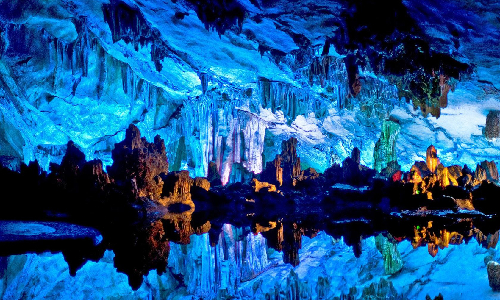
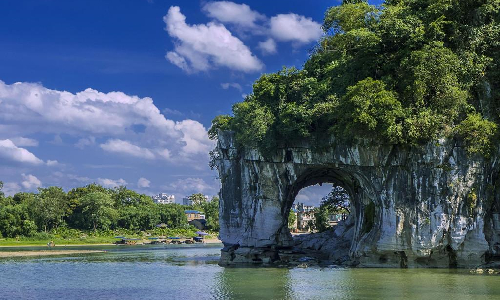
 Yanghsuo
Yanghsuo Guilin
Guilin This morning, we will drive you southeast for about 50 minutes (34 KM) to the Mopanshan Pier. From there you will take the Li River Cruise. The cruising journey will last for about 4 hours, and you will have a closer look at the views along the Li River, which overshadow the rest of the views in the world. However, it is said that thousands of years ago, Guilin is not as fascinating as now. Legend says that a long time ago, there were no mountains, rivers, or trees. The splendid scenery was created by a goddess named Chang’e when she was competing with 3 other goddesses to see who could create the most beautiful place in the human world. The three goddesses created Yunnan Stone Forest, Hangzhou West Lake and Luoyang Grottoes. Chang'e created mountains in different shape in Guilin. But in order to win this competition, she untied the ribbon tied around her waist and turned it into Li River. Sure enough, the Guilin scenery she created won the first place. Although this is only a legend, the fascinating scenery along the Li River truly exists.
Lunch will be served on the cruise. You will disembark from the cruise in Yangshuo. Your last stop today will be the Yangshuo West Street, the oldest but busiest street in Yangshuo. It is known as a foreigner street for it receives lots of overseas guests. Each year, the Yangshuo West Street receives over 1.5 million overseas tourists. Former US President Clinton, former US President Nixon, former US Secretary Kissinger, and former British Prime Minister Thatcher all have visited Yangshuo. There are many shops on West Street in Yangshuo, most of which are souvenir shops or local snack shops. If you want to buy some specialty products home, I recommend you to buy honey from Yangshuo. The honey here has a special floral fragrance, and the color of the honey will change to amber after being stored for a long time. It is a good product for daily health care.
Later we will drive north back to Guilin, which is 65 kilometers away and it will take approximately 1.5 hours.
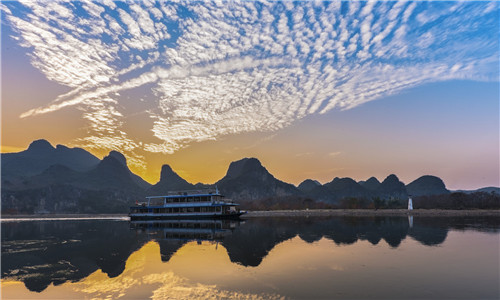
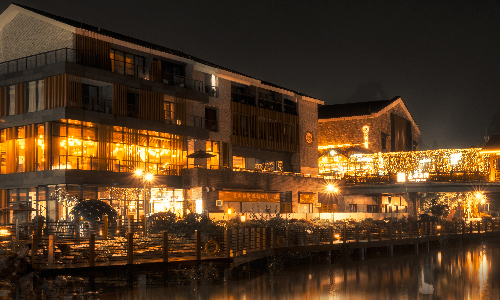
 Shanghai
Shanghai After breakfast, we will drive you to the train station to catch the estimated train G1502 11:52/21:13 to Shanghai. After the first two trips you took on China fast train, you must be familiar with it. How do you like it? Did you try the standing coin test? As usual, our tour guide will help you to aboard the train safely. A local tour guide will pick you up from the Shanghai Train Station and take you to the hotel. In China, some cities are prosperous and modern while others are historical and cultural. Shanghai has both. Have a good rest before you have a closer look at this unique city.
After breakfast, you will firstly enjoy the history and culture of Shanghai. We will drive you west for about 20 minutes to the Jade Buddha Temple. It’s only 5 kilometers away from the center of Shanghai. Located in the prosperous downtown area of Shanghai, the temple remains peaceful. Most tourists are attracted by the bronze bell placed in the temple, which has a magical power to examine whether you are true believers or not. If you are a staunch Buddhist, knocking it with a little strength will make a pleasant toll. Otherwise, you will make a muffled sound or even no sound with your greatest strength.
Your next stop will be the Yu Garden (Closed on Monday), which is 7 kilometers away. We will drive you southeast for 30 minutes. There are over 40 ancient buildings and artificial landscapes, including houses, pavilions, theatres, rockery, ponds, and some others. It covers an area of 20000 square meters. It was a private garden built by Pan Yunduan, a governor in the Ming dynasty for his parents. The garden was named after Governor Pan’s intention because “Yu” means healthy and happiness in Chinese. Building the Yu Garden for his parents, the governor Pan wished they could keep healthy and be pleasant in their later years. Wandering in the garden, you will feel pleasant by the quiet and beautiful scenery.
After lunch, we will drive east for 15 minutes to the Shanghai Tower, which is only 5 kilometers away from the Yu Garden. The Shanghai Tower is a skyscraper with a total height of 632 meters. You may want to know how to keep stabilization for such a skyscraper. Its bottom reaches 88 meters deep underground. With 980 pillars and a 1000-ton damper, the Shanghai Tower can withstand a Category 16 hurricane or a magnitude 8 earthquake. Today, you will have a chance to climb on the 118th floor on the Shanghai Tower to get a panorama view of Shanghai.
Later you will visit Nanjing Road, which is 5 kilometers away from the Shanghai Tower. We will drive you northwest for 18 minutes. Nanjing Road is one of the oldest business roads in Shanghai. The well-known LEGO Shanghai Flagship Store is located here, which is the first LEGO Flagship Store in Asia. The whole store is decorated with statues made of LEGO pieces, for example the Oriental Pearl TV Tower. Even its colors and lights are identical to the real one. It is said that it took 2800 hours and 540,836 pieces of Lego to build this reduced version of the Oriental Pearl TV Tower.
Finally, we will visit the Bund. With a total length of 1.5 kilometers, the development of modern Shanghai started from here. There are buildings of different national styles. The building known as “The Greatest Building on The Bund” is the original Asia Building, which is now the headquarters of China Pacific Insurance. This building is a combination of British classical architectural style and Baroque style. At that time, this was the tallest building on the Bund. Although it has a history of more than 100 years, this building still has high ornamental value nowadays. You can take a walk on the Bund and enjoy the last stop of your journey.
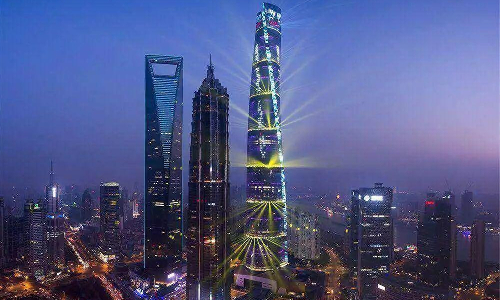
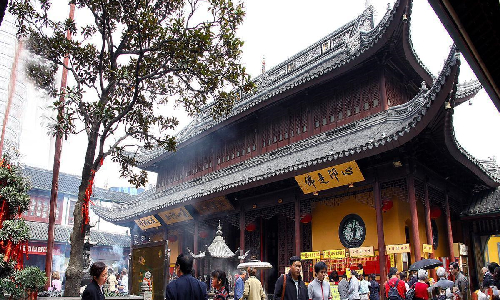
Today your 14-day China train tour comes to an end. We sincerely hope that you had a pleasant journey. Your tour guide will escort you to the airport. We have to say goodbye here. Have a safe flight home.
Author: Xinyi Lee
Proofreader: Betsy He
| City | Five Star hotel list | Four Star hotel list |
|---|---|---|
| Beijing | Sunworld Dynasty Hotel Beijing Wangfujing | Sunworld Hotel Wangfujing |
| Xi'an | Tianyu Gloria Grand Hotel Xi'an | Sunworld Dynasty Hotel |
| Zhangjiajie | Zhangjiajie Qinghe Jinjiang International Hotel | Zhangjiajie Huatian Hotel |
| Guilin | Lijiang Waterfall Hotel | Guilin Bravo Hotel |
| Shanghai | Ocean Hotel Shanghai | Courtyard by Marriott Shanghai Central |
 |
![]() About your child or infant, please contact us for a discounted price.
About your child or infant, please contact us for a discounted price.



We started with a few days in Beijing & ended in Shanghai, from where we visited the Forbidden City and Great Wall. In between we visited Terra Cotta Warriors Museum, Panda Base, Shanghai Disneyland.

We had a wonderful holiday in China which will remain long in the memory. China is a breathtakingly beautiful country full of splendid temples and palaces, mountains and rivers, peaceful rural scenes and bustling shopping streets.
 QUICK ENQUIRY
QUICK ENQUIRY